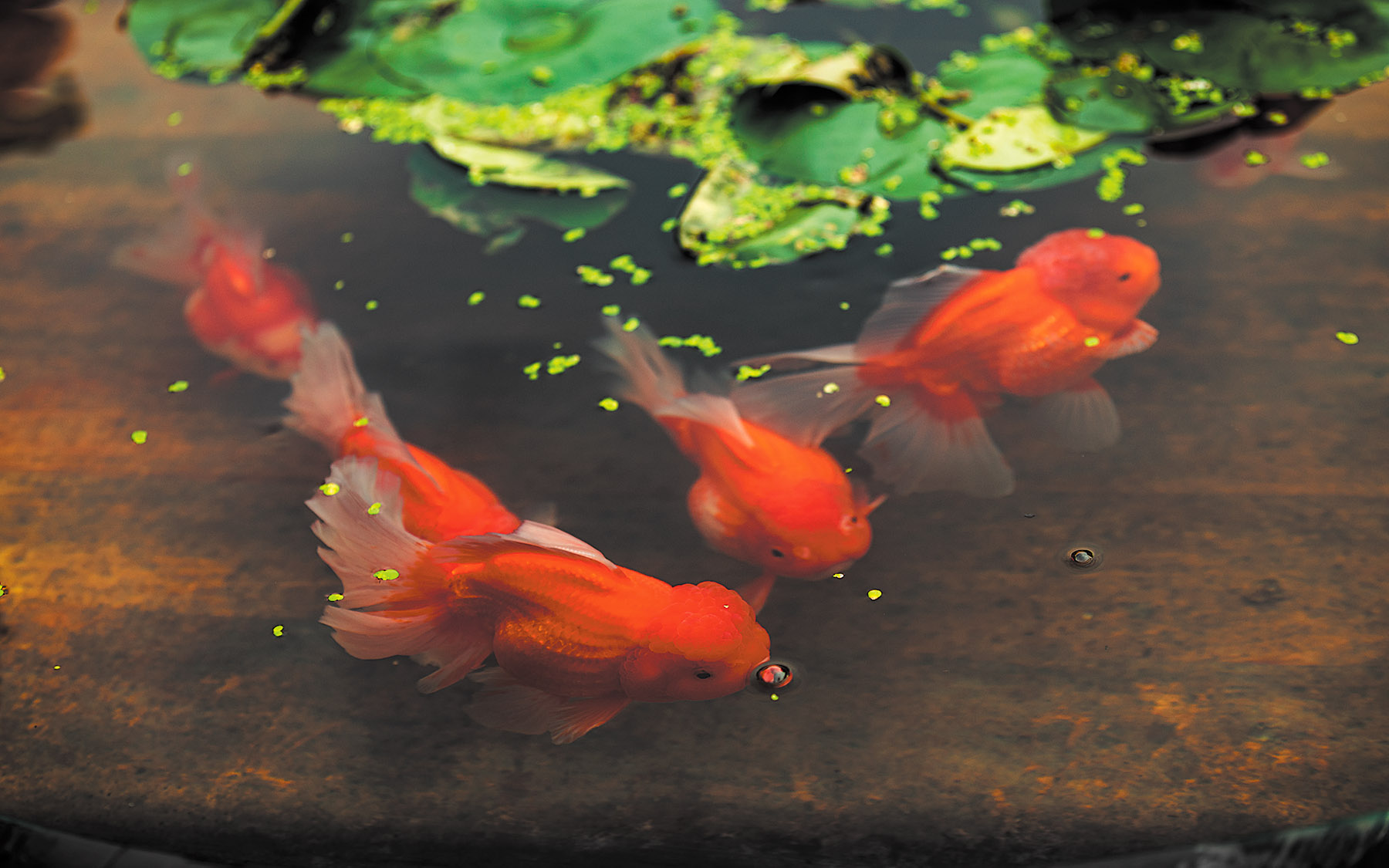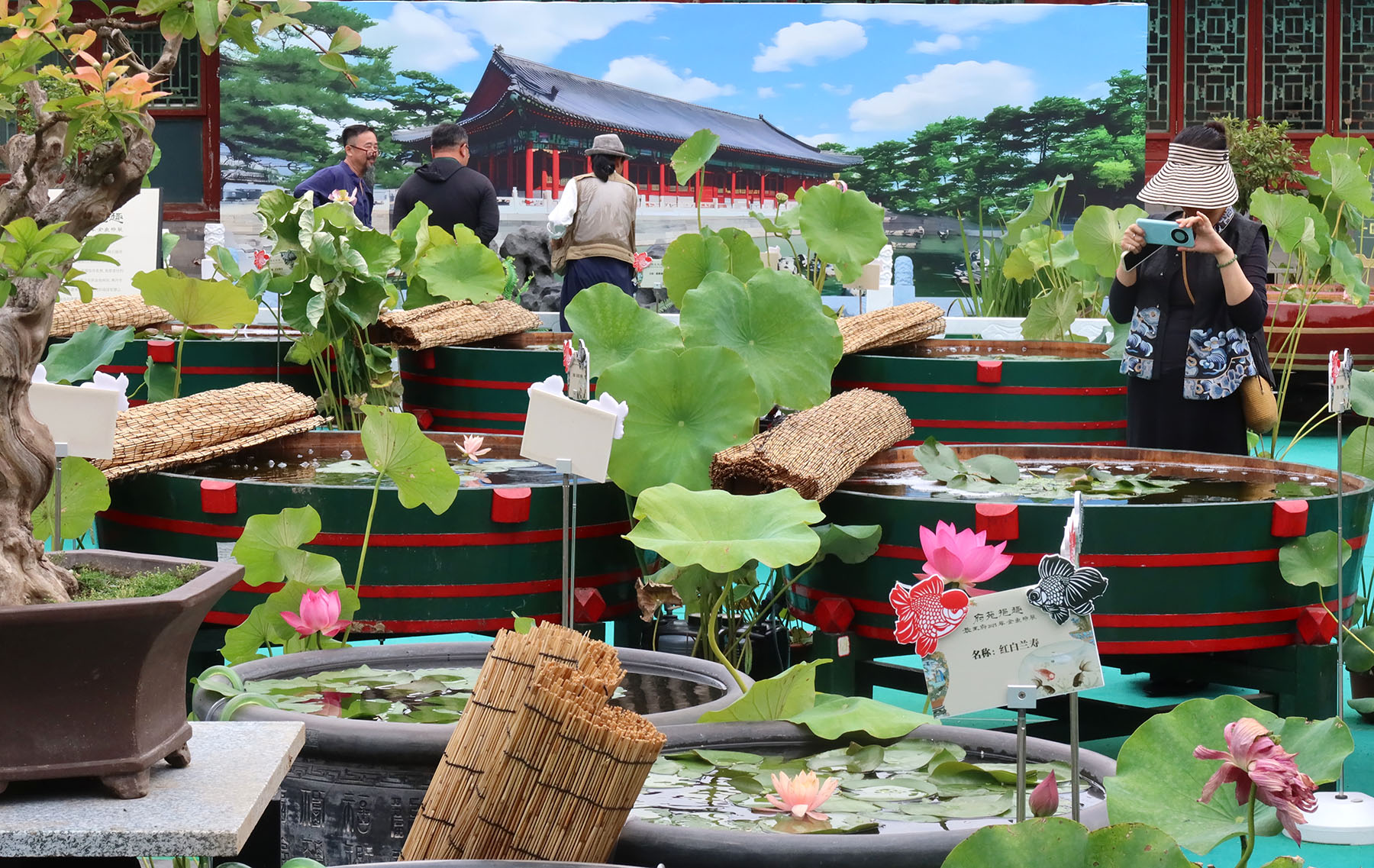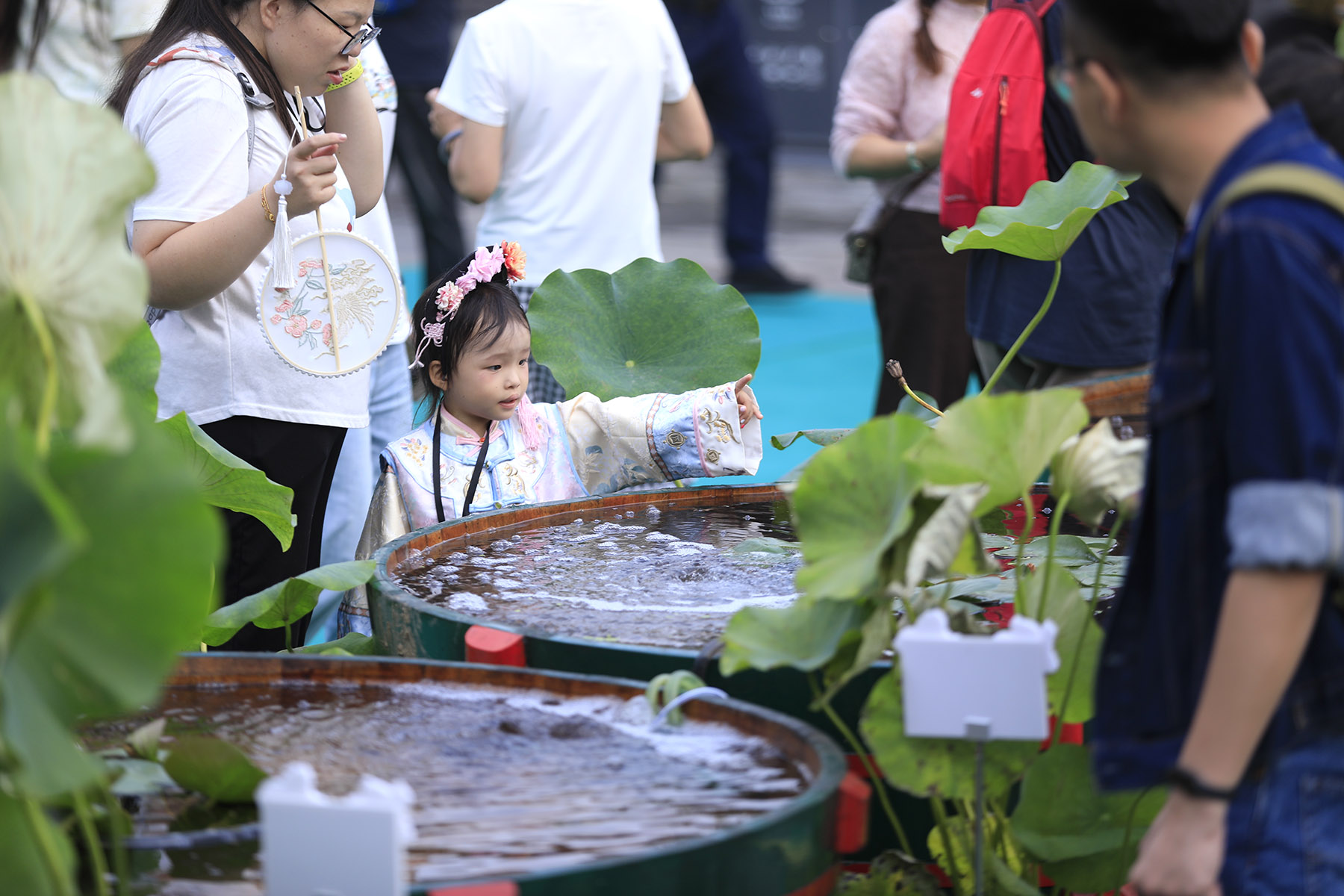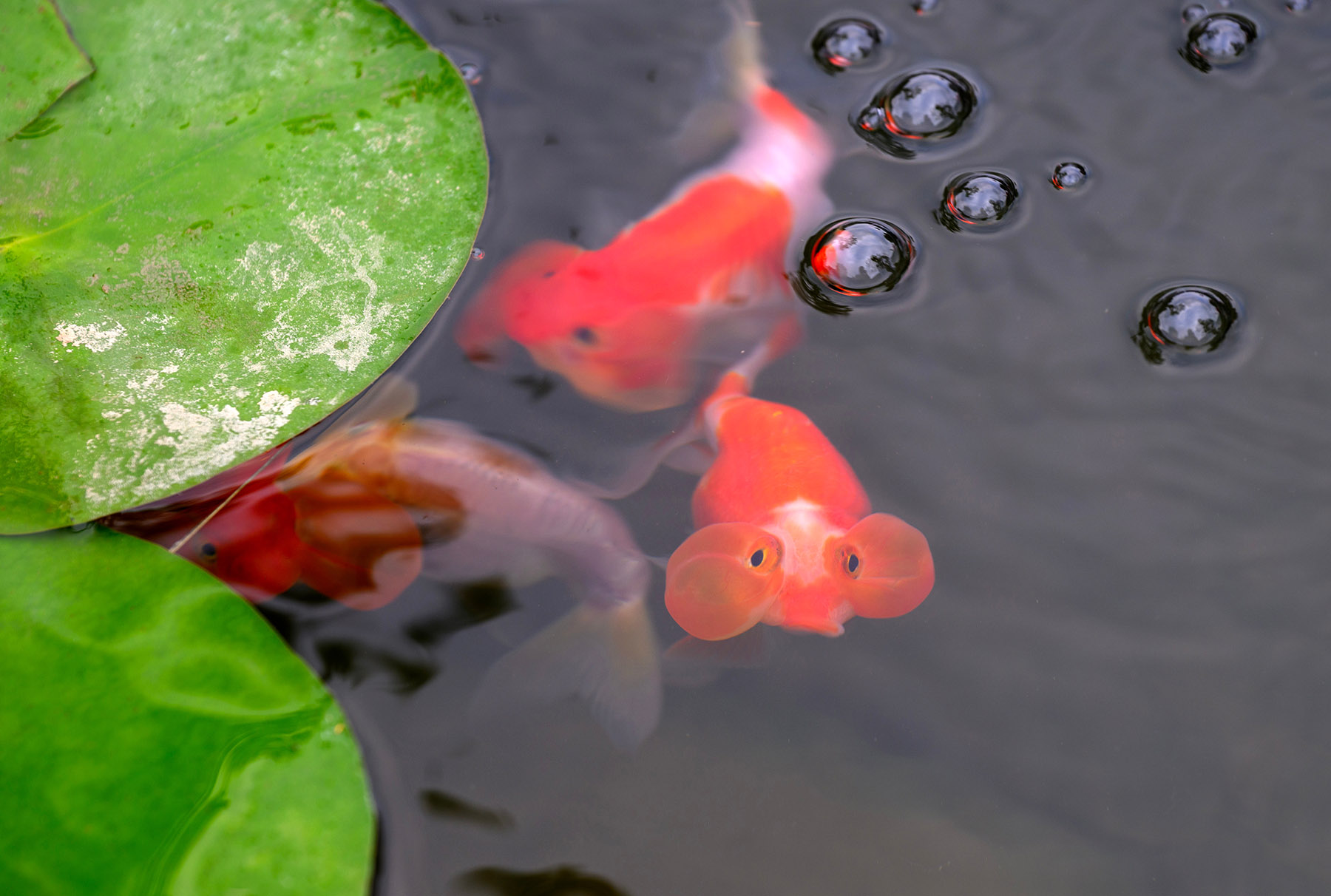While goldfish have short memories, this display of the little swimmers leaves a deep impression on visitors, Yang Feiyue reports.

The morning sun filters through lush giant trees in the eastern courtyards of Prince Kung's Palace Museum in downtown Beijing, dotting the water's surface with shifting patterns of light and shadow.
Beneath, flashes of living gold — elegant goldfish — drift like jewels among lily pads and lotus leaves at the museum tucked away in a hutong alley for more than 200 years.
They move through their watery world with timeless grace. Visitors come to the museum for more than just viewing an exhibition; they also step into a poetic scene that has remained unchanged for centuries.
This is the heart of the Palace Garden Elegance: Goldfish Special Exhibition, which opened on Sept 10 and will close on Tuesday.
Jointly hosted by Prince Kung's Palace Museum and the Beijing fisheries technology extension station, the exhibition is staged near the museum's Duofu Belvedere.
READ MORE: Goldfish set to make a splash at Forbidden City century later
Dozens of traditional goldfish vessels, such as wooden basins and clay pots, are elegantly arranged, displaying over 600 specimens of more than 50 varieties of imperial goldfish.
These "court goldfish" are regarded as aquatic treasures and represent the highest standard of goldfish breeding.
Visitors are invited to admire the dazzling colors and elegant forms of these graceful swimmers up close, immersing themselves in a poetic scene reminiscent of ancient verses.
Now in its fourth year, the exhibition has become a cultural event known for blending horticulture, historical recreation and the art of living.
This year's edition lays emphasis on fully immersing visitors in the refined goldfish culture of ancient China.
"We are proud to present a number of exceptionally rare and precious goldfish varieties," says He Chuan, a researcher from the Beijing fisheries technology extension station.

Among them is the Etouhong (Goosehead Red) goldfish, a rare and prestigious variety that is often regarded as the Queen of Goldfish for its elegance and beauty.
It is characterized by a bright, fiery red "hood", a pure, white, pearlescent body and graceful movements.
Also on display are the Crown Pearl goldfish, whose scales resemble pearls inlaid along their bodies, as well as the Lionhead and Ryukin varieties, which are showcased in aquariums along the museum steps. The former impresses with its majestic appearance, while the latter is cherished as a symbol of good fortune, He explains.
As one of the earliest artificially cultivated ornamental fishes in the world, goldfish are deeply rooted in China's history. Beijing stands out as one of the birthplaces of this enduring cultural practice, according to the exhibition organizers.
In Chinese culture, yu, the Chinese word for fish, shares its pronunciation with jade and surplus, bestowing upon goldfish a wealth of symbolism.
They have long been cherished emblems representing abundance and prosperity.
Historical records reflect this deep appreciation: goldfish grace the ponds of imperial palaces and private gardens alike, while also swimming into the hearts and homes of Beijing residents.
Across social spheres, these graceful creatures have endured as living symbols of peace, wealth, good fortune, and happiness, experts agree.
Behind the imperial goldfish's stunning diversity and captivating beauty lie generations of diligent, skilled breeders, whose expertise and dedication have preserved and refined this living art form over centuries.
"Goldfish have long been admired by scholars and poets, and were especially beloved in the imperial court. Historically, the most beautiful goldfish were selected through public competitions and sent to the palace," He says.

As visitors venture deeper into the courtyards, they will discover a row of elegant clay pots arranged under wisteria trees.
"Here we exhibit representative specimens such as the Ranchu goldfish, which is prized for its rounded, egg-shaped body, pronounced head growth, and complete lack of a dorsal fin, together with other rare breeds," He says.
He recommends visitors not to miss the Lemon Gold patterned fish, an exquisite variety characterized by a delicate lemon-yellow hue often adorned with subtle patterns resembling fine brushstrokes or lacework across its scales and fins, as well as the Bubble Eye goldfish that is instantly recognizable for its fluid-filled sacs that develop beneath its upward-pointing eyes, swaying delicately as it moves.
The Cat Lion goldfish, developed through crossbreeding Lionhead and Ranchu goldfish, has also garnered great attention from visitors for its bold, expressive appearance and impressive head growth and elegant dual tail, according to the exhibition organizers.
This variety embodies a perfect fusion of regal grandeur and playful charm, making it highly popular among goldfish enthusiasts who admire dramatic appearances and personality, He observes.
"The goal is to invite everyone to come and experience the refined artistic taste that ancient Chinese celebrated," he says.
Strolling through the garden, the lotus landscapes harmonize perfectly with the goldfish displays. A particularly valuable feature is the reproduction of a unique fish-viewing installation, a traditional aspect in Chinese gardening.
"Within a white marble-rimmed pool, we have constructed a 'fish cellar' from bluestone, complete with rockery and Dragon Eye goldfish swimming beneath," He notes.
"This structure offers shelter for ornamental fish during harsh northern summers and winters, re-creating an original concept from the Old Summer Palace gardens," he explains.

Huang Linqian was stunned by the exhibition during her visit last weekend.
"My family told me about the goldfish exhibition at Prince Kung's Palace Museum, so I decided to drop by," says the Beijing resident who keeps a fish tank at home.
"I have to say that goldfish culture is absolutely part of Beijing's soul, with all the wooden basins, clay pots, porcelain jars, aquariums … you name it. They have the classic vessels for raising goldfish right here," she adds.
ALSO READ: Goldfish adorn tide of history
Huang considers the pairing of goldfish with lotus flowers and seed pods a "perfect arrangement".
"There are also those beautifully curated bonsai displays. You can see a lot of thought went into it," she says.
He's team has meticulously re-created a fish table based on classical texts and modern aquaculture expertise.
It is said that Empress Dowager Cixi owned two such tables at the Summer Palace. These unique tables were designed with two layers of thick glass, turning the top into a viewing frame through which one could admire the goldfish swimming below.
"While it may not match the intricate craftsmanship of the antique version, it still offers a glimpse into the elegant world of ancient Chinese goldfish appreciation," He says.
Contact the writer at yangfeiyue@chinadaily.com.cn


